-
Posts
4,900 -
Joined
-
Last visited
Content Type
Profiles
Forums
Store
Help Articles
Posts posted by Adam Balic
-
-
It isn't a question of "romance" or in "realities", it is a question of logic and accuracy. I would never claim that every historical dish would be delicious, that would be absurd, much like taking the opposite opinion. Based on the few roman directions on food preparations, there are very few facts to support the notion that this food would send a modern diner from the room, anymore if exposed to any other unfamilar cusine.
There are numerous ways of producing garum, liquamen or muria described, but no censensus on how it was produced. The details don't matter, the point is that modern sophisticated diners don't on mass object anchovies, nuoc mam nor belacan being included in various extant dishes.
Information about Roman fish sauce by the food scholar Sally Grainger.
-
I not believe that this thread is about Roman wine at all, but as you know wine consumed in the Roman wine varied a great deal from region to region and period to period. Tastes change form people to people (for instance some Romans would have thought us barbaric for not diluting our wine), but to highlight the most distasteful of practices to modern readers as standard inaccurate and misleading. Could you take the statement "The wine of Bordeaux is all revolting as they add bull's blood and eggs to the wine" seriously for instance?
I also think that actively trying to discourage people trying to develop an idea of what other people's food culture is like, especially in context of education as it is case, is against the spirit of those who are interested in food and food culture and insulting to those of us that are actively interested in historical foods.
We have [one] late Roman collection of recipes. Lion doesn't feature prominately and there are plenty of recipes that would appeal to modern Western, even unadventurous , palates. Simple, fun, delicious items can be prepared from these directions, and that is what food education should be about.
Verjuice (slightly sour grape or in some cases crab apples et al juice) is increasingly appearing on supermarket shelves and many people are now familar with SE-Asian fish sauce (liquamen), so I can't see a problem with thoughtful and unbiased people finding these ingredients distasteful.
-
I don't belive this at all. Certainly, as in all cuisines there are items that will not appeal to all people. However, the Romans were not another species, they were just people, so why wouldn't we expect them to be capable of delicious food. Also, since there are no amounts of spices etc specified in the very few extant late Roman recipes we have, I wonder how we can know that their food was over spiced.
Regarding Medieval cooking, there are a great many people in the Middle-East and North Africa that eat food essentially the same as Medieval European food, yet I don't seem to see them leaving the hungry and frustrated.
In a phrase, if you're going to do either Roman or Medieval cookery, you have no choice but to modernize it (call that bastardization if you will), but if you serve the original, you'll have a good many hungry and frustrated people leaving your table. -
A new critical edition of the Apicus work is about to be published, which should be very interesting as the most recent published (and on line) translations are not so great.
The spices in historical English recipes is very interesting, one of the frustrating things is that in most cases there is very little indication of exactly how much spice was used as the recipes very rarely give amounts. One recipe collection that does do this (a French work) indicates that the spice level used was quite mild, however there is likely to be huge amount of variation from region to region and person to person.
A few extant (or nearly so) English recipes are Medieval survivors. Receipes like Cornish Caudle Pie, Devonshire Squab Pie and Hindle Wakes are proberly not that far of the Medieval origins.
-
It is a type of bottle gourd Lagenaria siceraria(Click). There are numerous types and this was the veg used in Europe until the introduction of New World squash which have yellow flowers.
Confusingly, his type of gourd is also found in the New World as it is thought to have floated across the Atlantic from Africa to the America's.
I believe that they can be extremely bitter, but some varieties more then others and there are ways of dealing with them. In Sicily, a non-bottle shaped variety is used (Click) and I have seen the regular bottle shaped type used in Morocco.
-
Not sure if these are a result of French colonialism or a endemic dish, but dinner tonight was Vietnamese country pancake. A basic batter of rice flour and coconut milk flavoured with curry powder. When this was cooking, spring onion tops, deepfried shallots and brown shrimp were placed on top. Once the pancake sets, the oil starts to render out of the coconut milk, which gives a golden brown colour and a crisp texture. The pancakes were stuffed with blanched bean shoots, herbs and stirfried caramel pork with amarath.

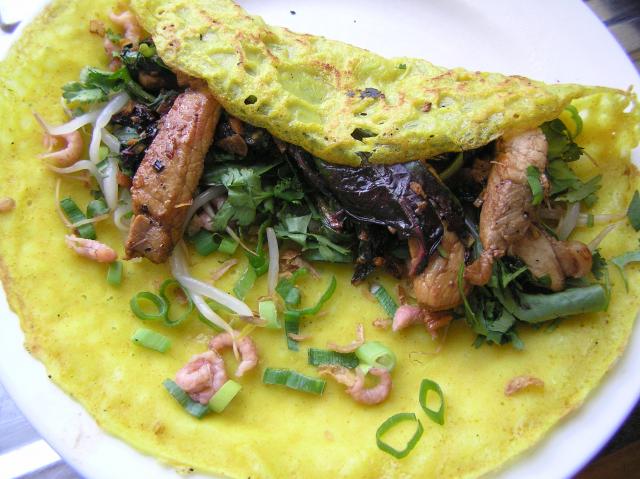
-
I was thinking about chiles from Mexico mostly, as I have become increasingly interested in the food from this region, but my memory from Melbourne was that the Mexican food was pretty vile and I can't remember seeing any ingredients to make it myself.
I found this site *Click*, good thing my parents have a farm I guess.
-
Cheers for that. Damn will have to grow my own chiles.
You know, BBQ that allows you to do that slow cooking (whole brisket for exampe) thing with lots of smoke etc, rather then and Australian BBQ, which is by and large grilling.
-
After six years in Edinburgh I shall be moving back to Melbourne at the end of the year. I haven't been home since 2002, so I have a few food related questions.
What is the state of Mexican food supplies? Is it possible to buy chiles, fresh tomatilla etc?
Is it possible to get an American style indirect smoke BBQ here now?
What cuisines are popular now and what is off the radar, so to speak? Buying cookbooks looks to be much cheaper here, so I would like to stock up before I come back.
-
Different fish, the flounder is Paralichthys albigutta, brill is Scophtalmus rhombus.
-
OK, the top fish is Turbot, the bottom is Brill. Both very good fish, but the former is excellet.
-
Yes, I thought that also, but Turbot is one of the greatest fish in the world, so I'm not so sure.
-
Really amazing, all of it, I am overawed. What wonderful wonderful looking food and ingredients.
-
OK it isn't the mot exciting dish ever, but a frittata with some nice fresh curdy cheese is an excellent way of preserving the favour and in your case, stretch the filling.
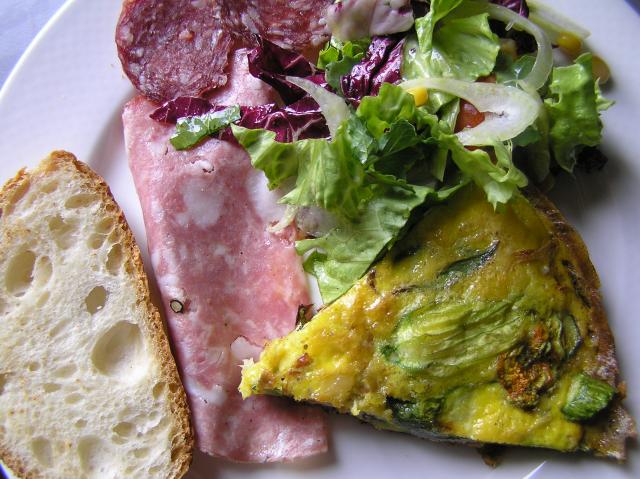
-
Your dolce made with chocolate and ground veal reminds me of a Neapolitan dish I would like to try later: a chocolate filled eggplant timbale that is slathered with chocolate once unmolded. Do you know if this is due to cultural exchanges between the southern coastal city and the island, or....?
liccumie are eggplant and chocolate dolce made in the same region as the meat and chocolate dolce.
-
No lard in the pastry. From what I have read, there is a wide variation in the composition of the short crusts made in Italy, so I used all butter as this is what I am use too using.
-
No the plates are Deruta Majolica from Umbria, but in reality they pretty much what most of the people throughout Europe would have used if they could afford it in the 16/17th century, so not so regional as such now.
-
OK, this pie is more of a dish from the 'Second' Sicily, then Sicily proper, but I guess it fits in as part of the spectrum of festive pasta pies from the region. No particular recipe, I made some veal meat balls, made a very rich pork ragu (used lard, not olive oil), boiled some eggs and grated/chopped uop some cheese. Really easy, I put it together in the afternoon, put in into the fridge and when and drank rum punch with my friends in the local park. Came back home half an hour before them an put it into the oven.
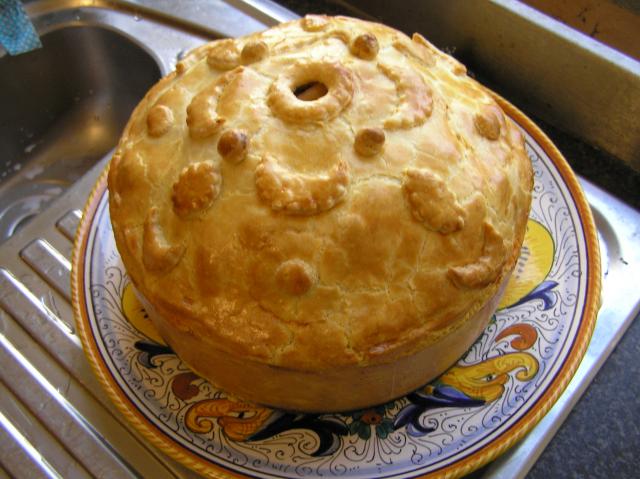
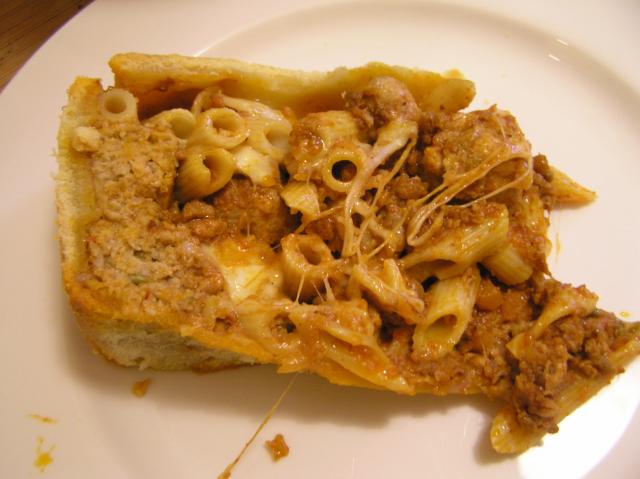
There is a reason why this type of pie is served from the top, scooping the filling out, rather then cutting in slices.
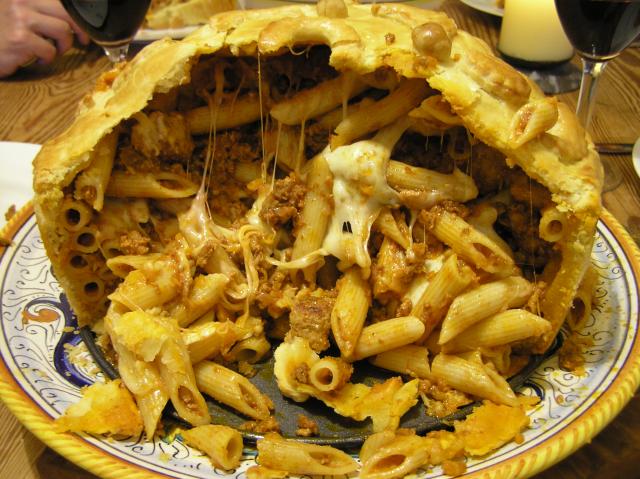
-
Adam & Andrew, this is for you. (And me
 at the very end.)
at the very end.)Click around the names of Sicilian sites. The outdoor market in Palermo is striking, too.
Discovered in search for this where Mary's mantle, not slippers (Norman) is purple.
Excellent photgraphs, the produce is just amazing isn't it?
-
I was young and foolish OK. Sorry.
-
Adam. Wild cardoons? This late in the year? Please say more.
Finally, the question posed in my new signature line is in fact a link to a very old thread where Adam is called The Balic. Still haven't read my way through all 13 pages of it, but thought you might be amused.
The cardoons were preserved under oil (store purchase), from Sardinia I think but I thought they would be appropriate as I saw wild cardoon/artichoke thistle flowers on sale in the Syracuse market.
The Balic was a complete arsehole, I wouldn't pay any attention to anything he said.
-
Right, I haven't been so successful in doing any cooking at the moment, but I did manage some tonight (yay).
A basic seafood pasta that I had in Lipari a few years ago. The flavours are fennel, capers, pinenuts, mint, a few diced tomatoes and, oddly apple. Not quite sure if this is traditional or a restaurant invention, but in context of the meal we had it was 'authentic', if you see what I mean. On Lipari it was swordfish, in Scotland it was sea-trout.
Salad - shaved fennel, orange, wild cardoon, pinenuts, capers, mint.
Dessert was watermelon jelly. Utterly delcious, although it didn't set. Something wrong with the recipe as I ended up using twice as much starch as suggested. Still if you have watermelon, you should make it as the flavours are great.
-
Yes it seems that most of the English language versions are incorrect.
This site also has a discussion on the topic.
-
I have always considered Dorade to be a kind of snapper. But then again I learned many of my fish in French. Anyway when I cook english recipes calling for snapper I always look for dorade.
Dorades and snappers look alike but they're not related; dorades and porgies are Sparidae and near-tropical (Mediterranean)/tropical fish, snappers are Lutjanidae, tropical fish that rarely swim North of their zone. Snappers are rarely found in France except flown-in at Asian of African markets or frozen. They have firmer flesh than the dorades and porgies. However you may perfectly use dorade for recipes using snapper, except that the flesh will be a bit more fragile. If you can find very large and fresh fillets you'll get closer to the original, and marinating them will increase the likeness. I particularly think of onion-lemon-chili marinades as in the West African yassa dishes. (Dorade en yassa is yum.)
Snapper/Sea Bream are mostly generic names and often interchangeable. True snapper are Lutjanidae, but there are plenty of Sparidae (Sea Bream/Porgies) that go under the name of "Snapper". Fish common names are very confused, especially in regards to naming fish after familiar European fish when setting up colonies around the world. Given the amount of fresh fish now being imported into Europe from African and Indo-Pacific waters, this is worth keeping in mind. Especially as certain dishes are not interchangable between the two groups if fish.
St Pierre is John Dory in France, so named because of the 'thumb print' (one wonders why not Mose's fish or why not name haddock St Peter's fish?), one type of Tilapia is found in the sea of Sea of Galilee and has also been called St Pierre for obvious reasons. No sure how recent this particular naming is and how much is marketing (non-Sea of Galilee species of tilapia as seem to be picking up the name).
This is the reason why the Atlantic wolffish is mostly sold as fillets BTW!
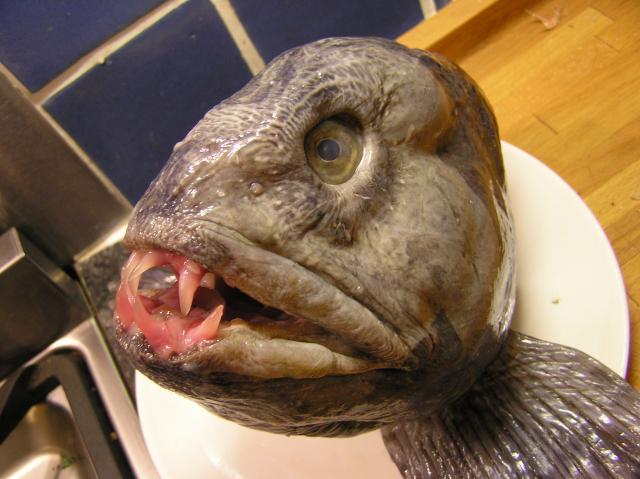



The F Word!
in Food Media & Arts
Posted
Thw Eel population has dramatically crashed (~90%) in the last decade or so and the native (white clawed) crayfish is declining rapidly due to the introduction of the American signal (red-clawed) crayfish. In regards to catching crayfish in the UK, I believe that the white clawed crayfish is protected? What were Ramsay et al catching?